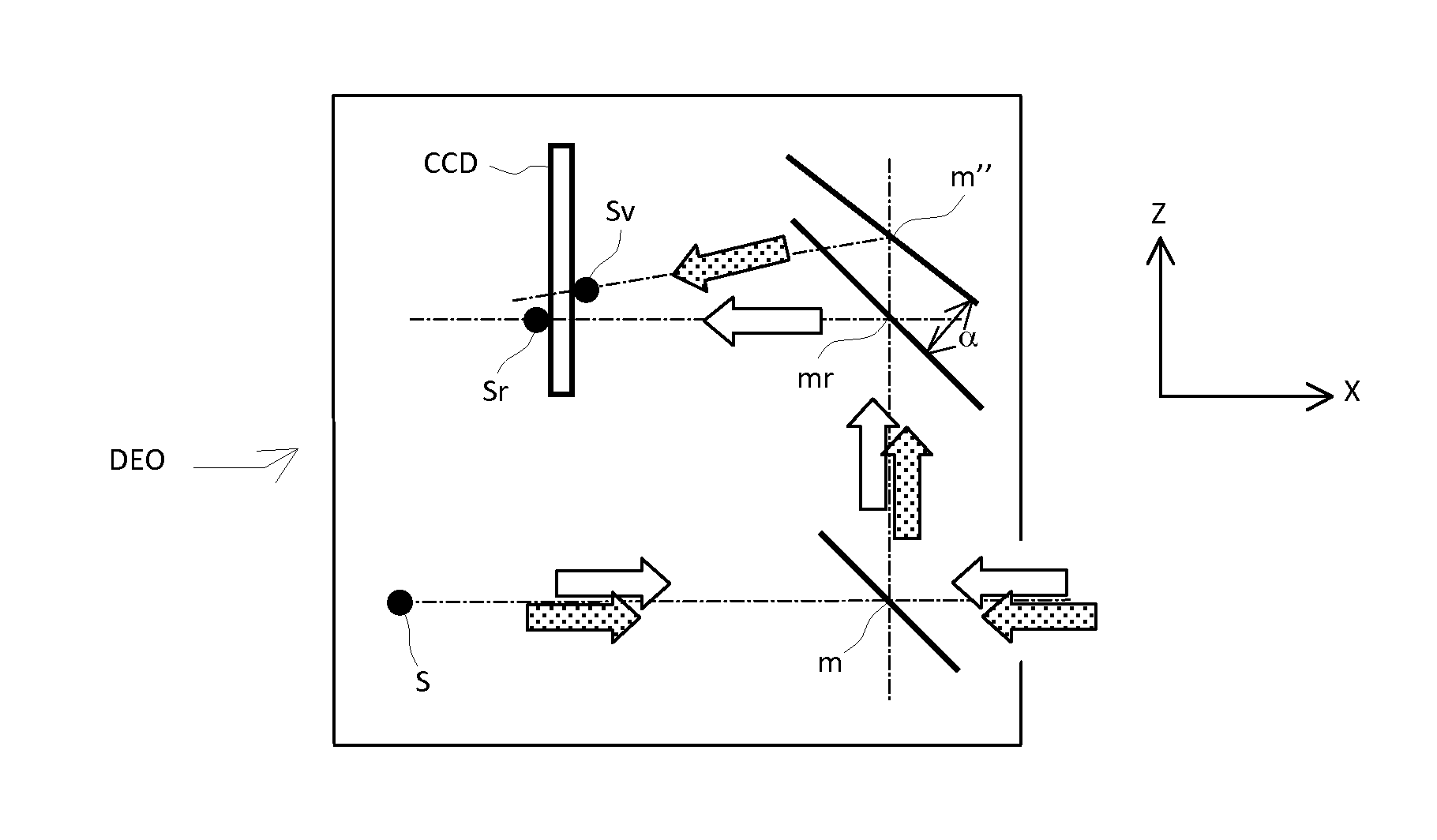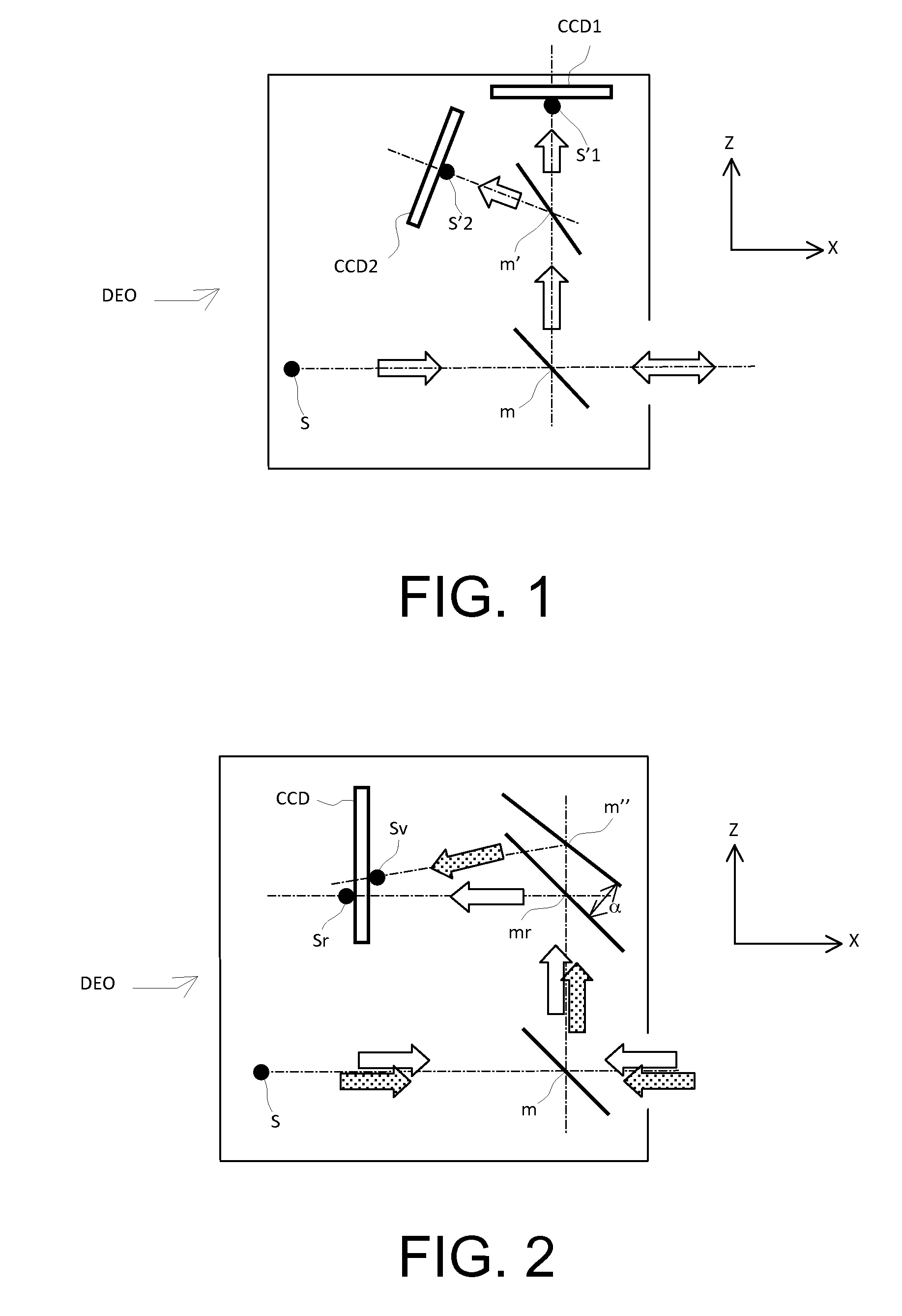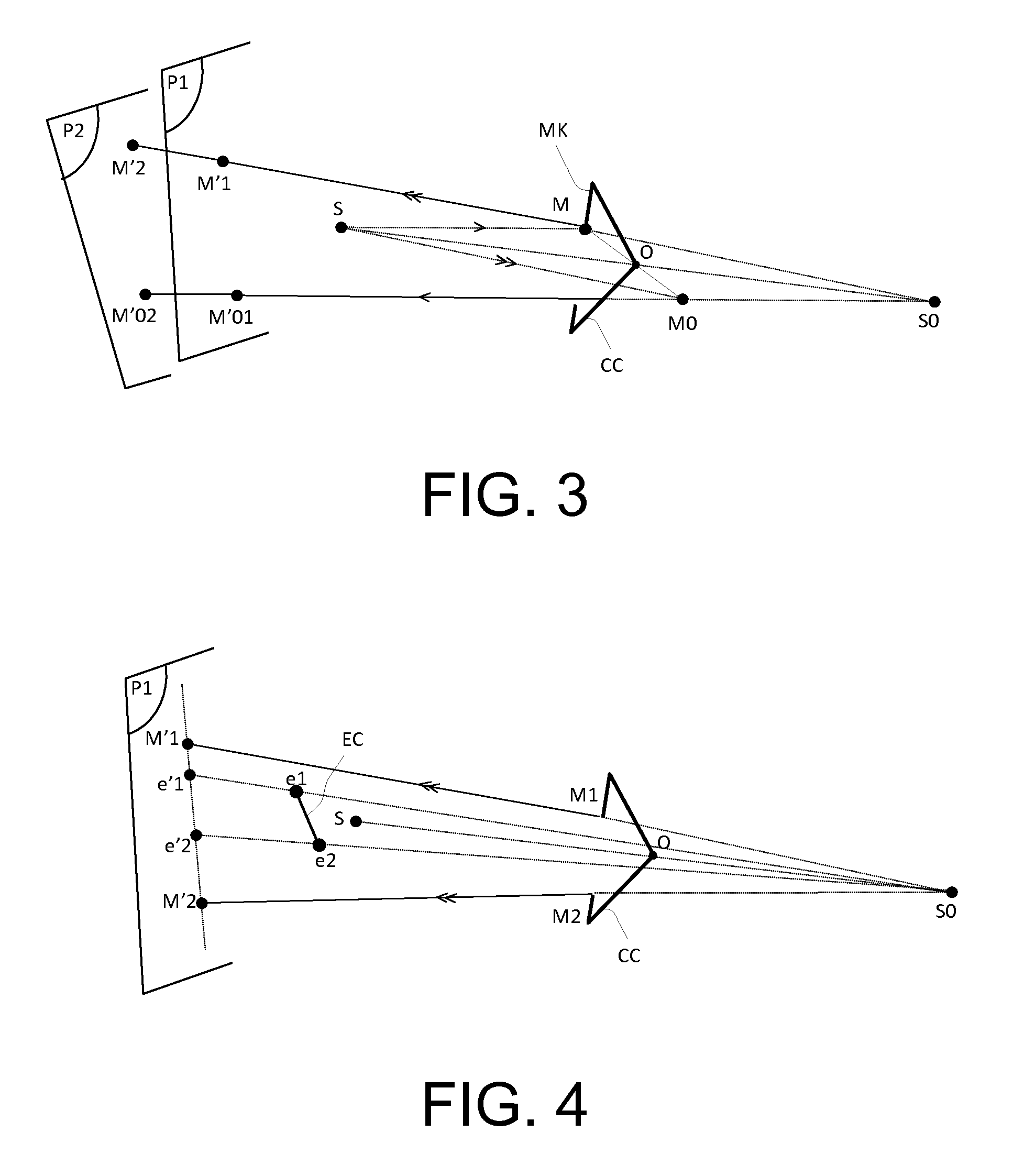Optical system for measurement of orientation and position comprising a point source, central mask, photosensitive matrix sensor and corner cube
a technology of optical system and orientation, applied in the field of optical devices, can solve the problems of large loss of light flux, heavy and expensive double image acquisition electronics, etc., and achieve the effects of improving the photometric yield of the assembly, improving the accuracy of measurement, and simplifying the fixed devi
- Summary
- Abstract
- Description
- Claims
- Application Information
AI Technical Summary
Benefits of technology
Problems solved by technology
Method used
Image
Examples
first embodiment
[0068]A first embodiment is represented in the cross-sectional views of FIGS. 15 and 16. The electro-optical device essentially comprises a point source S, a matrix sensor CM, and a mirror m comprising a transparent central opening EC1. In a first variant, the source is arranged behind this central opening. The radiation emitted by the source S passes through this opening EC1 and is reflected by the corner cube (not represented in FIG. 15). The peripheral part of the luminous contour is reflected by the mirror m towards the matrix sensor CM, while its central part is lost. A luminous contour with a dark zone is obtained. The opening EC1 of the mirror therefore corresponds to the obturating optical element. It may be reduced to a simple hole or have a more complex geometrical shape, as has been seen. A mask may be added at the source S so that the source does not directly illuminate the matrix sensor CM.
[0069]In a simple variant, which is represented in FIG. 16, focusing optics L whi...
second embodiment
[0071]the electro-optical device according to the invention is represented in FIG. 18. This FIG. 18 comprises a side view and a front view of the device. In this case, the electro-optical device essentially comprises a point source S, a matrix sensor CM, and a transparent plate LA comprising an opaque central screen EC3. The point source S is fixed in the vicinity of the centre of the opaque central screen. The central screen EC3 comprises an extension in the shape of a bar B. making it possible to mask the cabling of the point source. Here again, a luminous contour with a dark zone is obtained on the sensor CM, as can be seen in FIG. 19, which represents the image obtained on the matrix sensor. In the case of FIGS. 18 and 19, the central screen has a rectangular shape. The image B′ of the bar is easily identifiable, and in no way interferes with identification of the sides of the shade.
[0072]In an alternative embodiment, which is represented in FIG. 20, focusing optics L which form...
PUM
 Login to View More
Login to View More Abstract
Description
Claims
Application Information
 Login to View More
Login to View More - R&D
- Intellectual Property
- Life Sciences
- Materials
- Tech Scout
- Unparalleled Data Quality
- Higher Quality Content
- 60% Fewer Hallucinations
Browse by: Latest US Patents, China's latest patents, Technical Efficacy Thesaurus, Application Domain, Technology Topic, Popular Technical Reports.
© 2025 PatSnap. All rights reserved.Legal|Privacy policy|Modern Slavery Act Transparency Statement|Sitemap|About US| Contact US: help@patsnap.com



